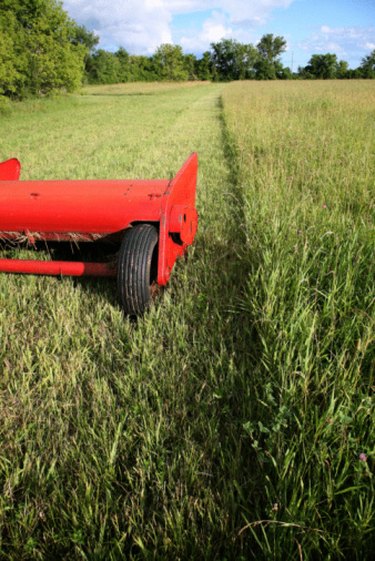Things You'll Need
Phillips screwdriver
Flathead screwdriver
Socket wrench set
Tachometer

Briggs, also known as Briggs & Stratton, produces a line of engines for lawnmowers. These engines contain carburetors, some of which are the Nikki brand. To keep your lawnmower running smoothly, you should appropriately adjust the carburetor. Any sign of vibration or dark smoke is a signal that you need to make adjustments. Avoiding this process can lead to damage to the lawnmower's engine.
Step 1
Remove the housing covering the air filter. Pull it away from the lawnmower with your hand. Pull the now exposed air filter cartridge from its slot with your hand.
Video of the Day
Step 2
Turn the idle mixture screw clockwise one and a half turns with a Flathead screwdriver. This screw is located on the bottom left-hand side of the carburetor.
Step 3
Turn the main jet adjustment screw counterclockwise one and one half turns with a Flathead screwdriver. This screw is located at the bottom of the float bowl on the carburetor. The float bowl is a round piece on the side of the carburetor.
Step 4
Insert the air filter cartridge in the location from which is was removed.
Step 5
Start your lawnmower. Pull the start cord or press the start button.
Step 6
Allow the lawnmower to run at half throttle for at least five minutes until the engine has warmed up.
Step 7
Turn the idle mixture slowly clockwise until you can hear the engine slowing and then counterclockwise until you hear the engine slowing again. Go back and forth between these two directions until you can hear the middle speed between the two extremes.
Step 8
Connect the red wire of the tachometer to the spark plug wire of your lawnmower. Twist together the two wires.
Step 9
Turn the idle screw to 1750 RPMs for an aluminum cylinder or 1200 RPMs for a cast-iron cylinder engine. Determine the RPMs by looking at the face of the tachometer.
Step 10
Throttle the engine for several minutes.
Video of the Day